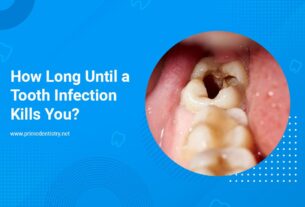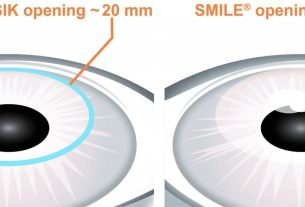Page Contents
What You Need To Know About Cardiac Rehabilitation
Cardiac rehabilitation, also known as cardiac therapy, is a medically supervised program designed to improve the overall health and well-being of individuals with heart conditions. Candidates for cardiac rehabilitation include those who have had any of the following:
Symptoms:
- Heart attack
- Angina
Conditions:
- Coronary artery/heart disease (CAD/CHD)
- Heart failure
Procedures/Surgery
- Coronary artery bypass graft
- Coronary/balloon angioplasty and stenting
- Valve replacement
- Pacemaker implantation
- Cardioverter defibrillator implantation
Cardiac therapy typically includes a combination of exercise, education, and counseling. It aims to help patients manage their symptoms, reduce their risk of future heart problems, and improve their quality of life. Let us discuss the components and importance of cardiac rehabilitation in more detail.
Components of Cardiac Rehabilitation
1. Exercise
The exercise component involves a carefully structured exercise program that is tailored to the individual needs of each patient. The goal of exercising is to help patients restore their cardiovascular fitness, increase their strength and flexibility, and improve their overall physical health. The program is closely monitored and adjusted based on the patient’s progress and response to the program. Here are some of the exercises involved in cardiac rehab:
Aerobic Exercises
- Cycling (recumbent bikes, stationary bicycles, dual-action bikes)
- Walking (done on a treadmill)
- Aquatic exercises (swimming, water walking, using a kickboard)
Resistance Exercises
- Weightlifting (weight machines, kettlebells, dumbbells)
- Calisthenics (sit-ups, pushups, squats
- Resistance bands (for stretching or warming up)
2. Heart Health Education
Health education provides patients with the knowledge and skills they need to manage their heart condition effectively. This includes information on diet, medication, stress management, managing symptoms, reducing risk factors, and lifestyle modifications, such as quitting smoking and reducing alcohol consumption.
3. Counseling
Cardiac rehabilitation also involves counseling. This helps patients cope with the emotional and psychological challenges of living with a heart condition. It can include individual counseling, group therapy, or support groups and is aimed at letting patients develop coping strategies, improve their communication skills, and strengthen their support networks.
Who Are Involved in Cardiac Rehab?
Cardiac therapy involves a multidisciplinary process. A cardiac rehab team typically comprises of the following professionals:
- Cardiologist
- Physiotherapist
- Clinical Nurse Specialist
- Nutritionist/Dietitian
- Occupational Therapist
- Psychologist
- Pharmacist
- Smoking Cessation Counselor
- Vocational Counselor
- Social Worker
Stages of Cardiac Rehabilitation
Stage 1: Inpatient Rehab
The first stage of cardiac rehabilitation typically occurs while the patient is still in the hospital. This stage is designed to help the patient regain their strength and mobility following a heart-related event or surgery. During this stage, the patient may be given oxygen therapy, receive medication to manage their symptoms, and participate in light exercise.
Stage 2: Early Outpatient Rehab
The second stage usually begins shortly after the patient is discharged from the hospital. This stage is designed to help the patient transition from inpatient care to outpatient care. During this stage, the patient will receive individualized exercise prescriptions and participate in monitored exercise sessions. The patient may also receive nutrition counseling and stress management techniques.
Stage 3: Intensive Outpatient Rehab
The third stage is designed to help the patient continue to improve their cardiovascular health and overall fitness. This stage usually involves more intensive exercise programs, as well as education on heart-healthy lifestyle changes. The patient will continue to receive individualized exercise prescriptions and participate in monitored exercise sessions, and may also receive psychological counseling to help manage any stress or anxiety related to their heart condition.
Stage 4: Maintenance Rehab
The final stage is focused on helping the patient maintain their newfound fitness and heart health. During this stage, the patient will continue to participate in regular exercise programs and receive ongoing education and support. The goal of this stage is to help the patient establish long-term habits and lifestyle changes that will help them reduce their risk of future heart problems.
What Are the Benefits of Cardiac Rehabilitation?
1. Reduces the Risk of Complications
By participating in a rehabilitation program, patients can learn how to manage their symptoms, control their blood pressure and cholesterol levels, and reduce their risk of developing further heart problems.
2. Improves Cardiovascular Health
The exercise program can improve cardiovascular health by increasing blood flow to the heart, strengthening the heart muscles, and reducing inflammation. Patients will also be prescribed heart medicines and food supplements to keep their hearts in good health.
3. Boosts Physical Functioning
Heart conditions can limit a person’s physical ability and lead to a sedentary lifestyle. However, cardiac rehab can help patients regain their strength and improve their physical functioning through targeted exercises and activities. This can help them to perform daily tasks with greater ease and confidence, improving their overall quality of life
4. Enhances Emotional Well-being
Heart problems can take a toll on a person’s mental health, leading to depression, anxiety, and stress. Cardiac rehab provides a supportive environment where patients can connect with others facing similar challenges and receive emotional support from healthcare professionals. This can help to enhance their emotional well-being and reduce their stress levels.
5. Promotes Long-Term Health
Cardiac therapy is not just a short-term solution but a long-term approach to managing heart conditions. By adopting healthy lifestyle habits and participating in ongoing rehabilitation programs, patients can maintain their cardiovascular health for years to come.
If you just had a heart event or procedure, don’t skip cardiac rehabilitation. Studies have revealed that cardiac therapy decreases the chances of death within 5 years after a heart attack or bypass operation by 35%.
Make sure to talk to your doctor/cardiologist about cardiac rehab. As for the expenses, most insurance plans cover it if advised by a doctor, so don’t hesitate to enter a heart health program when you have to.



